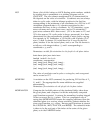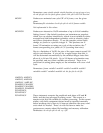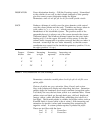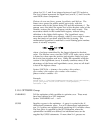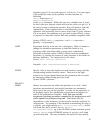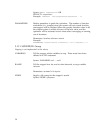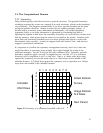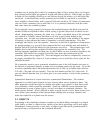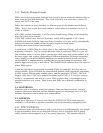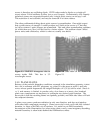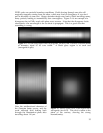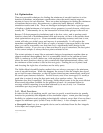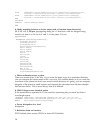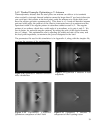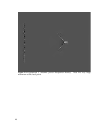3.3.1. Perfectly-Matched Layers
PMLs are fictitious anisotropic materials that (usually) absorb whatever radiation falls on
them from pre-specified directions. They work extremely well when they work at all,
which isn’t 100% of the time.
PMLs don’t absorb in every direction, so different parts of the domain need different
PMLs. This is such a pain that POEMS makes a valiant effort to automate it for you. It
works as follows:
(i)If a PML touches a boundary, it will be set to absorb energy falling on that boundary
from the centre of the domain.
(ii)If a PML touches more than one boundary, rule(i) will be applied to all of them.
(iii)PMLs that touch both the upper and lower boundary of an axis will be automatically
split in half down the middle so that (ii) can be applied to both halves.
(iv)PMLs must touch at least one boundary.
A solid block of PML filling the whole space is thus split into 8 blocks, each absorbing
diagonally outwards. You can manipulate these rules to customize PMLs for your use.
One common desire is to have PMLs covering the whole outer skin of the domain, with
the faces, edges, and vertices all absorbing in different directions (26 blocks altogether).
This is fiddly, so the HOLLOWBOX statement was added to POEMS to take care of it.
HOLLOWBOX is implemented by splitting the box up and letting the automatic PML
handler apply rules (i)-(iv) to each block. The TILEDPLANE statement does the same for
planar PML regions.
POEMS has heuristics for generating reasonable PMLs automatically, but these are not
always reliable. Signs of trouble are checkerboard patterns, fields apparently originating
in PML regions, floating-point runtime errors, and the generation of NaNs. This will
happen every time if you put a material boundary near a PML, or if you have sources
inside it. A reasonably safe rule is to put a PML no closer than 1 wavelength from a
material boundary or a source. Plane waves and PMLs are a difficult combination in
TEMPEST.
3.4. MATERIALS
Materials used in POEMS are treated as isotropic, linear and time-invariant. tempest
supports photoresist materials and has limited support for anistotropic ones, so if this
becomes important it can be added in a future release.
3.5. SOURCES
POEMS has a rich array of sources, and when the PUPILFUNCTION order becomes
available, it will be able to generate essentially any monochromatic propagating field.
3.5.1. POINT SOURCES
In continuous-space electrodynamics, static point sources are mathematically very simple.
In electrodynamics, there are no monopole sources, since a monopole field is purely
radial, whereas electromagnetic waves are purely transverse. The simplest physical
33



